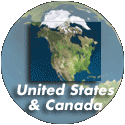
Rainbowsphere on Badger Mountain
Southeastern Washington State, USA
March 23, 2007 5:30 PM PDT
© 2007 John G. Dobbins, All Rights Reserved.
The rainbow, which only a week before this spring equinox was gloriously revealing itself for several days in a row, eluded me on this day's outing and so is fabricated by more Photoshop gradient fill and polar-coordinates filter trickery. Atmosphere as illusion?
The shrub-step view and the meadowlark song birds unique to this area are real, and were spactacular this day, with plenty of obvious housing growth and the mighty Columbia meandering downstream from the steadily leaking waste tanks (!) of the Hanford Nuclear Reservation, through Richland, Pasco, and Kennewick communities respectively, and on to the gorgeous Columbia River Gorge toward the Portland, Oregon metropolitan area and further west into the Pacific Ocean.
Lat: 46° 14' 11.68" N
Long: 120° 19' 49.13" W
Elevation: 360 feet
Precision is: High. Pinpoints the exact spot.
Big sagebrush is especially adapted to survive these conditions. Its root structure can reach as far as 27 m in diameter, dominating the water source and limiting the number of other large plants that can establish themselves. Its small gray-green leaves are covered with minute white hairs that keep water in the plant. In this harsh climate, sagebrush provides important cover and forage for wildlife.
Accompanying sagebrush in the community are a variety of native plants such as rabbitbrush, bitterbrush, greasewood, winterfat, spiny hopsage, horsebrush, fescue, Indian ricegrass, bluebunch wheatgrass, and wildrye. Other herbaceous plants, or forbs, include lupines, globe mallow, Indian paintbrush, sego lilies, phlox, and arrowleaf balsamroot. An occasional prickly pear cactus can also be found."
read the full article here


 Tap or click the zoom icon in the bottom right corner of the picture to switch between in-page and fullscreen view
Tap or click the zoom icon in the bottom right corner of the picture to switch between in-page and fullscreen view